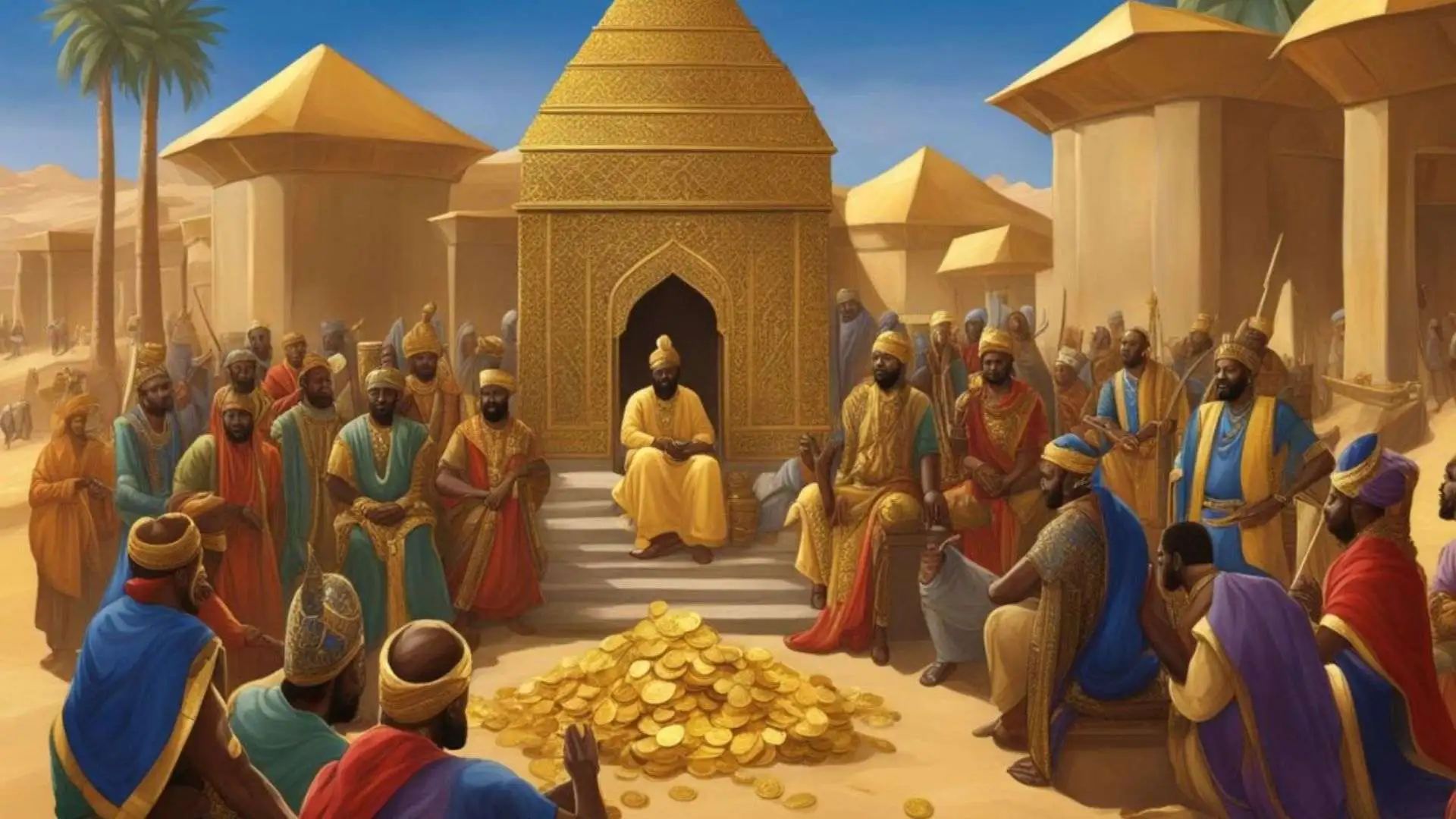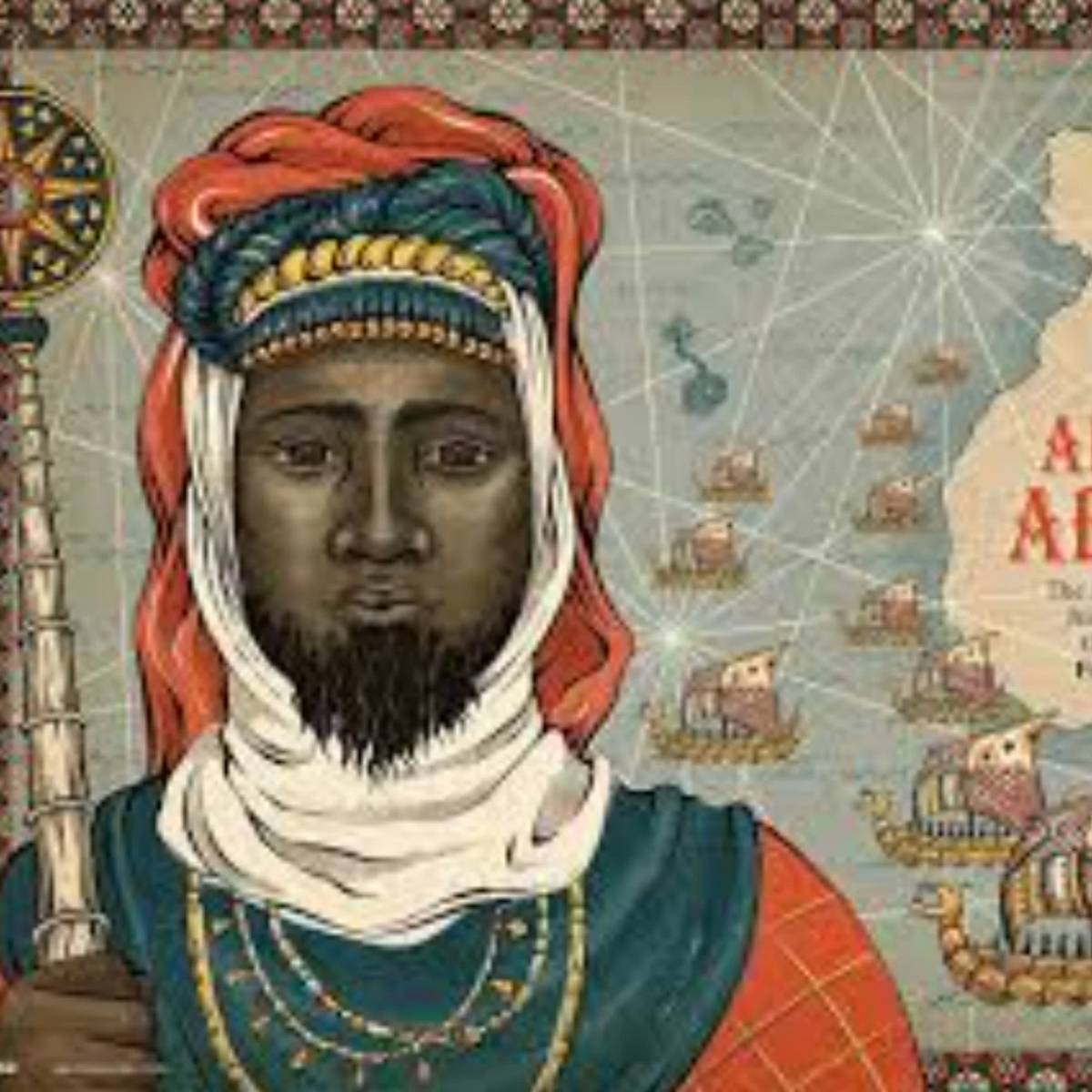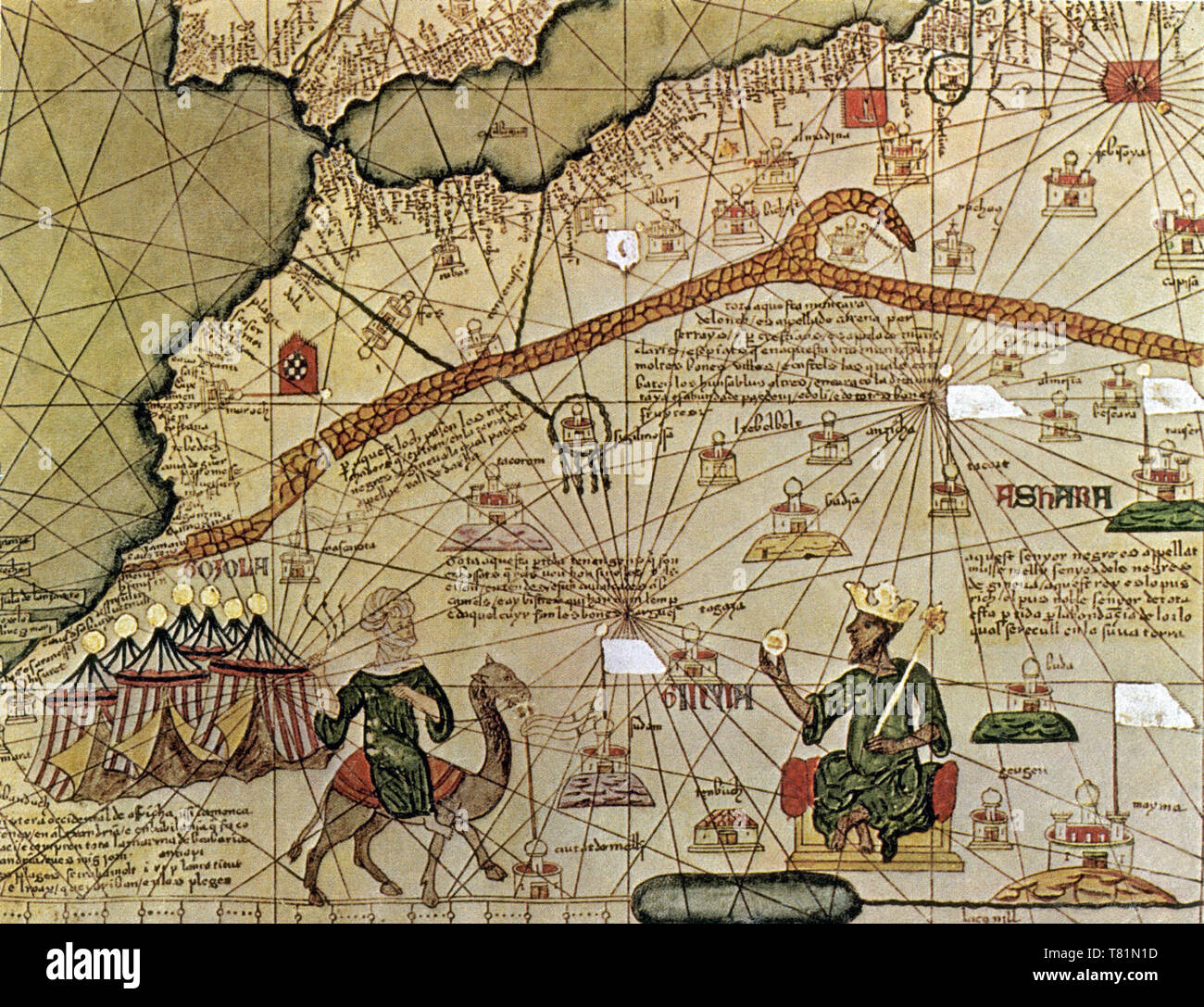Have you ever stopped to think about the incredible wealth some people have held throughout history? It's a fascinating subject, really, and when we talk about the most astonishing fortunes, the name Mansa Musa nearly always comes up. People often wonder about Mansa Musa net worth, and it's a topic that sparks a lot of conversation, even today.
His story, you know, is quite something. He ruled the Mali Empire, a place that was, in some respects, a true powerhouse of its time, especially when it came to gold. So, trying to put a number on his fortune is almost like trying to count all the stars in the night sky; it's just so vast, so incredibly large, that it almost defies easy description.
This discussion about his riches, it actually helps us think about wealth itself, what it means, and how it has shaped the world we live in. We will try to explore just what made Mansa Musa so unbelievably wealthy and why his name still rings out when people talk about money and power, basically, even centuries later.
Table of Contents
- Who Was Mansa Musa? A Look at His Life
- Personal Details and Bio Data
- The Golden Empire: Sources of Mansa Musa's Wealth
- The Legendary Hajj: A Display of Unfathomable Riches
- Mansa Musa's Impact and Legacy
- How Do We Measure Such Historic Wealth?
- Frequently Asked Questions About Mansa Musa's Wealth
- The Enduring Fascination with Mansa Musa's Fortune
Who Was Mansa Musa? A Look at His Life
Mansa Musa, whose full name was Musa Keita I, was the tenth Mansa, or "Sultan," "Conqueror," or "Emperor," of the Mali Empire. He took control in 1312 CE, and his time as ruler lasted for a good long while, until around 1337 CE. His rule, you know, came at a time when the Mali Empire was already quite strong, but he definitely pushed it to new heights, making it very much a hub of trade, learning, and culture.
The Mali Empire itself, at its biggest point, was a truly vast area. It covered parts of what we now call Mauritania, Senegal, Gambia, Guinea, Burkina Faso, Mali, Niger, Nigeria, and Chad. So, it was a huge chunk of West Africa, really. This empire, it controlled some of the most important trade routes of its day, particularly those dealing with gold and salt. This control, it was basically the foundation of his immense fortune.
His family, the Keita dynasty, had been in charge for some time, so he inherited a pretty well-established system. He was, in a way, born into a position of great influence and opportunity. His reign is often remembered for its stability and the amazing prosperity that the empire enjoyed. People often look back at his time as a kind of golden age for the region, which is, you know, quite a compliment.
He was, in fact, a very devout Muslim. This faith, it played a really big part in his life and in how he ruled. His famous pilgrimage to Mecca, which we will get to in a bit, was a truly significant event, not just for him personally, but also for the entire empire and for how the rest of the world saw Mali.
Personal Details and Bio Data
| Full Name | Musa Keita I |
| Title | Tenth Mansa (Emperor) of the Mali Empire |
| Reign | c. 1312 CE – c. 1337 CE |
| Dynasty | Keita Dynasty |
| Religion | Islam |
| Known For | Unfathomable wealth, pilgrimage to Mecca, expansion of Mali Empire, promotion of education and culture |
| Main Source of Wealth | Gold and salt trade |
The Golden Empire: Sources of Mansa Musa's Wealth
The core of Mansa Musa's unbelievable wealth, it came from the natural resources that were abundant within his empire's borders. We are talking, very much, about gold and salt. These two commodities, they were like the oil of their time, incredibly valuable and highly sought after across continents. Mali, you see, was situated right in the middle of major gold-producing regions, like the Wangara goldfields.
The empire controlled the trade routes that moved this gold from the mines in the south, across the Sahara Desert, to the markets in North Africa and beyond. This meant that any gold leaving the region, it pretty much passed through Mali's hands, and the empire, it took a cut. This system, it was incredibly effective, generating vast amounts of income for the royal treasury. So, it wasn't just about owning the mines; it was about controlling the entire supply chain, which is, you know, a very smart way to do business.
Salt, too, was a very precious item. In many parts of Africa, salt was just as valuable as gold, sometimes even more so, because it was so essential for preserving food and for people's health. The empire controlled significant salt mines, particularly in places like Taghaza. This control over both ends of the trade, gold coming out and salt going in, gave Mansa Musa's empire an almost complete monopoly on these vital goods, basically.
Beyond these primary resources, the empire also benefited from general trade. Timbuktu and Djenné, two of its most famous cities, became very important centers for commerce, learning, and cultural exchange. Goods from all over, like textiles, spices, and other valuable items, would pass through these cities, and the empire, it collected taxes and fees on these transactions. This added another layer to the empire's financial strength, which was, you know, quite something to behold.
The way his government worked, it was, in a way, very organized, much like how a modern institution might manage its services. You see, El instituto salvadoreño del seguro social le informa que, a fin de brindar un mejor servicio, se ha habilitado la emisión para los trabajadores del comprobante de inscripción al isss. This kind of structured service, while vastly different in scale and purpose, shares a common thread with Mansa Musa's administration: a system designed to manage and distribute resources, or provide services, for the benefit of a large population, ensuring things run smoothly, more or less.
The Legendary Hajj: A Display of Unfathomable Riches
The most famous story that really shows off Mansa Musa's immense wealth is his pilgrimage, or Hajj, to Mecca in 1324. This was not just a personal religious journey; it was a grand procession, a very public display of his empire's prosperity. It was, arguably, one of the most spectacular events of its kind in history, truly something to remember.
He traveled with an absolutely massive entourage. Accounts from the time suggest his caravan included tens of thousands of people, perhaps even up to 60,000, including soldiers, servants, merchants, and entertainers. And, you know, there were camels, hundreds of them, each one loaded down with gold. Some say there were 80 to 100 camels, and each carried hundreds of pounds of pure gold dust. This was not a small trip, not by any stretch.
As they passed through Cairo, Egypt, Mansa Musa, he gave away so much gold. He was very generous, distributing it to the poor and trading it with local merchants. This sudden influx of gold, it actually caused the value of gold in Cairo to drop significantly for a good many years, maybe even a decade. This effect, it really shows just how much gold he had and how freely he was willing to share it, or, you know, spend it.
The sheer scale of this journey, it truly put Mali on the map, in a way that nothing else could have. European cartographers, they started including Mali on their maps, often showing Mansa Musa himself holding a gold nugget. This trip, it wasn't just about faith; it was a powerful statement about the wealth and influence of his empire, basically, making a very clear mark on the world's perception of West Africa.
The stories of his generosity and his incredible display of wealth, they spread far and wide, reaching Europe and the Middle East. People were, quite frankly, amazed. It was a kind of soft diplomacy, showcasing the power and richness of Mali without needing to wage war. It was, for sure, a very effective way to get noticed on the global stage of that time.
Mansa Musa's Impact and Legacy
Mansa Musa's rule, it was about more than just wealth. He was also a big supporter of education and culture. He brought back scholars, architects, and artists from his pilgrimage, and they helped to transform cities like Timbuktu and Djenné into centers of learning and Islamic scholarship. Timbuktu, in particular, became home to the Sankore University, which was, you know, a very important place for study and intellectual activity.
He built mosques and other grand buildings, many of which still stand, in some form, today. This focus on building and learning, it shows that he was not just interested in accumulating riches, but also in making his empire a place of lasting importance and intellectual growth. It was, basically, a vision for a well-rounded and prosperous society.
His legacy, it's very much tied to the idea of unimaginable wealth, but it's also about the flourishing of West African culture and scholarship. He helped to create a powerful and stable empire that, in a way, contributed significantly to the intellectual and economic life of the medieval world. His name, it really does stand for a peak of African achievement, which is, you know, quite a thing to consider.
The stories of his wealth, they have, over time, taken on an almost mythical quality. They remind us that history is full of amazing figures and events that can truly challenge our ideas about what's possible. It's a testament to how one person's actions, even centuries ago, can leave a very lasting impression on the collective memory of humanity, more or less.
To learn more about ancient empires and their leaders on our site, and link to this page for further historical insights. These resources can help you explore how different rulers shaped their times.
How Do We Measure Such Historic Wealth?
Trying to put an exact number on Mansa Musa net worth is, honestly, a very difficult task. We are talking about the 14th century, a time when financial records were not kept in the same way they are today. There were no stock markets, no complex financial instruments, and no global banking systems like we have now. So, any number you hear is, at best, a very educated guess, or, you know, an estimation.
Historians and economists, they often describe his wealth as "incalculable" or "so vast it's impossible to imagine." Some modern estimates, they have tried to put a figure on it, often adjusting for inflation and comparing it to modern economies. These estimates, they sometimes reach hundreds of billions of dollars, even up to $400 billion or more, but these are, quite frankly, just conceptual figures, very much open to interpretation.
The problem is, you cannot really compare the wealth of a medieval emperor, who owned all the gold mines and controlled all the trade routes, to a modern billionaire whose wealth is often tied up in stocks, real estate, and other assets. Mansa Musa's wealth was, in a way, the wealth of his entire empire, the very resources and economic output of a vast region. It was, essentially, the GDP of a large part of West Africa, all under his direct control, more or less.
The true measure of his wealth, then, is not just a dollar figure, but the sheer impact it had. The fact that his generosity could destabilize an entire economy, like Cairo's, with gold, that tells you something. It shows a level of personal and state control over resources that is, basically, unheard of in modern times. So, it's more about the scale of his influence and the abundance of resources he commanded, rather than a precise number you could find in a bank account today.
Frequently Asked Questions About Mansa Musa's Wealth
Was Mansa Musa the richest person ever?
Many historians and economists, they generally agree that Mansa Musa was, quite possibly, the wealthiest individual in all of recorded history. His fortune, you know, was just so immense, so tied to the vast gold production of his empire, that it's very difficult to find anyone else who commanded such a large portion of the world's resources at any given time. So, yes, the consensus is very much that he holds that title, basically.
How did Mansa Musa get his wealth?
Mansa Musa's wealth came primarily from his empire's control over the vast gold and salt trade routes of West Africa. The Mali Empire, it sat atop some of the richest gold mines in the world at that time, and it also controlled crucial salt deposits. He, as the emperor, owned all the land and its resources, so the gold and salt that flowed through his empire, it was, in a way, all his. This direct control over such valuable commodities made him incredibly rich, you know.
What happened to Mansa Musa's wealth after he died?
After Mansa Musa passed away, his empire, it continued to be wealthy for some time under his successors. However, the sheer concentration of wealth that he personally commanded, it gradually dispersed. The empire, it faced various challenges over the centuries, including internal disputes and external invasions, which eventually led to its decline. So, while the wealth didn't vanish overnight, it certainly didn't stay consolidated in the same way, or, you know, under one ruler, for very long.
The Enduring Fascination with Mansa Musa's Fortune
The story of Mansa Musa and his incredible net worth, it continues to capture people's imaginations today. It's a tale of immense riches, certainly, but also of a powerful African empire that was a center of learning and culture. His journey to Mecca, it was not just a religious act; it was a global announcement of Mali's prominence, basically.
Thinking about his wealth, it really puts things into perspective about what true abundance can look like. It makes us consider how different societies, over time, have valued and managed resources. His story, it reminds us that history is full of fascinating figures whose lives were, you know, truly extraordinary.
So, the next time you hear someone talk about the richest people in history, Mansa Musa's name will, very likely, come up. And now, you have a better idea of why his fortune was so legendary, and why it continues to be a topic of such great interest, even now. It's a story that truly stands the test of time, in some respects.



